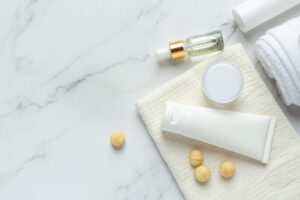Sensitive skin can often feel like a delicate balancing act. It can react adversely to a variety of environmental factors, and even to some skincare products. For those with this skin type, one of the primary challenges lies in cleansing – a fundamental step in any skincare routine. This article aims to guide you through this process safely and effectively.
Understanding Sensitive Skin
Skin sensitivity is primarily a result of a compromised outer skin layer, which allows irritants, allergens, and bacteria to penetrate and cause adverse reactions. Common irritants include harsh detergents, certain fragrances, and even some natural ingredients. The act of cleansing itself, if done improperly or with the wrong products, can exacerbate these issues.

The Importance of Proper Cleansing
Cleansing removes dirt, oils, and dead skin cells from the skin’s surface. For sensitive skin, it’s not just about keeping the skin clean, but also maintaining skin health and preventing irritation. Improper cleansing can strip the skin of its natural oils, leading to dryness, irritation, and even breakouts.
Ingredients to Avoid
Certain ingredients commonly found in cleansers can irritate sensitive skin. These include sulfates (often listed as Sodium Lauryl Sulfate or Sodium Laureth Sulfate), synthetic fragrances, and alcohol. These ingredients can strip the skin of its natural oils and disrupt its pH balance, triggering irritation and dryness.
Choosing the Right Cleanser
Choosing the right cleanser is crucial. Look for cleansers labeled “for sensitive skin” as these are usually free of potential irritants. Ingredients like aloe vera, chamomile, and green tea are soothing and beneficial for sensitive skin. Hyaluronic acid and ceramides can help maintain the skin’s moisture barrier. Avoid cleansers that produce a lot of foam, as these are typically more drying.

Proper Cleansing Technique
When it comes to cleansing sensitive skin, gentleness is key. Wet your skin with lukewarm water – hot or cold extremes can cause irritation. Apply a small amount of cleanser using your fingers, and gently massage it into your skin using circular motions. Avoid scrubbing or rubbing. Rinse thoroughly but gently, ensuring no residue is left behind. Pat your skin dry with a soft towel, rather than rubbing.
The Role of Moisturizing
Moisturizing after cleansing is crucial for all skin types, but especially for sensitive skin. It replenishes any moisture lost during cleansing and helps maintain the skin’s natural barrier. Look for moisturizers with ingredients like glycerin, hyaluronic acid, and ceramides. Avoid those with synthetic fragrances and dyes.
Additional Tips
In addition to proper cleansing and moisturizing, sensitive skin can benefit from other skincare practices. Always wear sunscreen to protect from UV damage, and consider wearing a hat and sunglasses for additional protection. A healthy diet rich in antioxidants can also contribute to skin health. And finally, consider seeking professional advice. Dermatologists and estheticians can provide personalized skincare advice and treatments tailored to your specific needs.
Cleansing sensitive skin doesn’t have to be a daunting task. By understanding your skin and its needs, choosing the right products, and using gentle techniques, you can cleanse your skin effectively without causing irritation. Remember, every person’s skin is unique, and what works for others might not work for you. Always listen to your skin and observe how it reacts to different products and practices. The goal is to achieve a balanced, healthy complexion that feels as good as it looks.
Your skin is the largest organ in your body, and it deserves the utmost care. The journey to understanding your sensitive skin might be fraught with trial and error, but with patience and consistency, you’ll find what works best for you.




